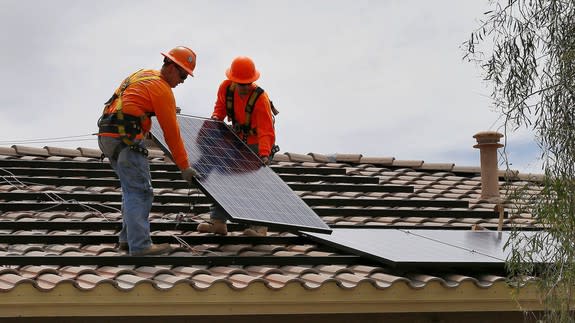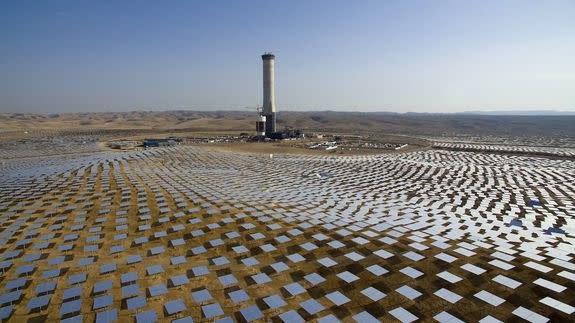The well-paying job of the future will be solar-powered

The Trump administration may be trying to revive the moribund coal sector in the U.S., but new figures released Tuesday show that it will be hard to catch up to the galloping solar sector.
The annual National Solar Jobs Census, published by the nonprofit, nonpartisan Solar Foundation, found that 1-in-50 new jobs created in the U.S. in 2016 were in the solar industry.
The report, which is the seventh annual look at the solar power workforce in the country, found that solar industry employment outpaced U.S. economic growth by 17 times, with an addition of 51,000 jobs during the year.
SEE ALSO: No, U.S. climate scientists didn't trick the world into adopting the Paris deal
There is now a total solar workforce of about 260,000, which is 25 percent higher compared to 2015 data. This means the solar industry now employs more people than the coal and fossil fuel electric power sectors.
Solar jobs are not limited to one or two states, or even just blue states instead of red ones. Solar jobs increased in 44 of the 50 states in 2016, the report found, with the top 5 states for solar jobs being California, Massachusetts, Texas, Nevada and Florida.
Solar jobs tend to be pay well and enable people to earn livable wages with relatively little advanced training required, Andrea Luecke, president and executive director of The Solar Foundation, said.

Image: Oded Balilty/AP/REX/Shutterstock
Luecke said her group's data shows the median wage in the solar industry is $26 dollars an hour, compared to the median wage in the country of just $20 dollars per hour.
Many states that voted for President Trump saw significant growth in solar jobs last year, including Indiana, Louisiana, Nebraska and Wisconsin, according to the report.
Not surprisingly, states that are heavily dependent on fossil fuels for revenue have been lagging on solar deployment, such as Montana, Idaho and Wyoming. These states are some of the biggest coal-producing states in the country.
“Coal country states are really lagging behind,” Luecke said.
Solar power, like wind and other renewables, faces an uncertain future in the U.S. because of the Trump administration's strong tilt toward the fossil fuel industry and pledge to dismantle climate change regulations that have helped to boost renewables.
However, state policies will be crucial in supporting continued growth in solar power deployment as well as jobs, Luecke said.
“Solar is the lowest cost, most reliable energy form for many places in the country," she said. “It’s not gonna die, we’re going to maintain the momentum.”
